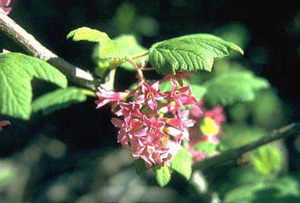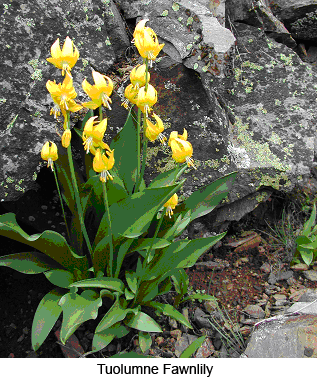xxx,xxx,xxx,xxx
METRIC TONS OF CO2
EQUIVALENT TO
SCRUBBING FROM THE AIR THE ANNUAL
CO2 EMISSIONS FROM xxx.xxx,xxx,xxx VEHICLES
Wildlife & Plant Species
SPI wildlife biologist demonstrates owl calls
Most of our wildlife and plant species evolved in an environment where frequent natural fires shaped the landscape. Yet, each of these landscapes has strikingly different soil types and elevation changes. As a result, Sierra Pacific Industries' lands have a wide variety of habitats which support a diverse group of wildlife and plant species.
Providing good quality habitat for native species is an important aspect of forest management. SPI believes we need to have a dynamic, diverse landscape across our ownership. We know forest ecosystems are always changing and cannot be, for example, a continuous carpet of trees. We need characteristics of young forests, openings with grasses and forbs, intermediate size trees, large trees, snags, oak woodland, streamside vegetation, and many other habitat combinations. SPI's foresters and biologists strive to understand our forest habitats and how native species use these habitats. Having a better understanding of wildlife species and the habitat they use is critical to providing suitable habitat for native species now and into the future.

Plant Issues: SPI owns lands in several major floristic regions of California and Washington. The ownership includes Douglas Fir forests of the Coast and Klamath Ranges of California and the Cascade Range of Washington. We also have California lands in the mixed-conifer regions of the Cascade and Sierra Nevada Ranges. East-side pine dominates lands in the Modoc Plateau of California. Each of these areas includes a unique suite of plants, some common and some rarely seen.
Coastal Plant Species: The major conifer species is Douglas Fir. Two hardwoods most abundant and generally distributed in the region are Tanoak and Pacific Madrone. Other hardwoods include Vine Maple, Bigleaf Maple, Red Alder, Oregon White Oak, Cascara Buckthorn, Willows, and California-bay Laurel.
Of the great variety of vegetation found in association with these trees, the following species are especially common: Bracken fern, Sword fern, Salal, Blueblossom, California huckleberry, Pacific rhododendron, Salmonberry, Coyote-brush, and snowbrush.

Klamath, Cascade, and Sierra Nevada Plant Species: The major conifer species are Ponderosa Pine, Jeffrey Pine, Sugar Pine, Douglas Fir, White Fir, Red Fir, and Incense-cedar. Common shrub species include greenleaf manzanita, deer brush, snowbrush, mountain whitethorn, mahalamat, bearclover, bush chinquapin, bitter cherry, gooseberries, and currants. Understory plants include mule ears, paintbrush, Yarrow, wooly sunflower, Sierra wallflower, and Bracken fern.
Protecting Rare Plants SPI has an active program to detect and protect rare plants on its lands. In California alone, we have over 300 plant species which receive some type of protection from operations. Prior to harvesting, SPI analyzes which species might be found in the area and then conducts targeted searches in suitable habitat. When a species is found, plant protection measures are proposed which will not cause a significant adverse impact to the species. These protections are reviewed by state regulators.
In a typical year, SPI locates 200 new occurrences of rare plants representing 40 different plant species. All locations are reported to a state natural diversity database. Since the botanical program began, over 1,500 new occurrences of rare plants have been located and protected.
Animal Species: Approximately 250 vertebrate wildlife species can be found in Sierra Pacific forests. These 250 species are made up of a wide variety of amphibians, reptiles, mammals, birds, and fish. Some of these species spend most of their lives on land, while others are closely tied to surface water during their lifespans.
The forest wildlife species that spend most of their life on land, or terrestrial species, find quality habitat in one or more habitat conditions. These habitat conditions can be described as early seral forest, small tree forest, large tree forest, or open forest.

Early seral forest habitats are the grassy or brushy stages of forest development, before trees begin to dominate a site. Representative wildlife species include the mountain quail, willow flycatcher, elk, and the ringneck snake. These species find good breeding and feeding habitat within this vegetative condition.
Small tree forest habitats are best described as dense pole-sized stands of trees. Representative wildlife species include the salamander, flammulated owl, downy woodpecker, ringtail, and rubber boa. These species find good habitat in relatively dense, shaded stands with a diversity of snag sizes and moderate amounts of woody debris on the forest floor.
Large tree forest habitats are the mature stands of trees that many people are familiar with. Representative wildlife species within this habitat condition include the Spotted Owl, Pacific Fisher, Silver-haired Bat, and the Clouded Salamander. These species find good quality habitat for breeding or feeding in stands with a significant component of large trees combined with other habitat elements, such as snags, logs, and oak trees.
Open forest habitats are forest stands that are open enough to allow a shrub or grass layer to exist under the forest canopy. Representative wildlife species that use this habitat condition include the western tanager, golden-mantled ground squirrel, and the Hairy Woodpecker. These species find good habitat in open stands with a variety of tree sizes, snags, logs, and a complex array of forest floor vegetation.
Wildlife species that are closely tied to water, or aquatic species, include a number of amphibians, mammals, birds, and of course, fish. Representative species include the tailed frog, the water shrew, the water ouzel, and a variety of salmon species. These species find good habitat in or near streams that have cold, clean water and a complex streambed. Streambeds composed of a variety of sediment sizes, from large rocks to silt, provide ample opportunity for these species to locate good habitat. Woody debris within and adjacent to the stream generally enhances the habitat quality as does having a complex array of streamside vegetation.

Pacific Fisher Studies: The Pacific Fisher (Martes pennanti) is a small relative of the weasel which lives in forests managed by SPI. It is also a species near the top of the food chain. Its current range is generally in far northern California, west of Interstate Highway 5. It was more common in the early 1900's in the Sierra Nevada until furs became fashionable in the clothing industry and then it was trapped.
Many studies on the fisher indicate the species thrives in undisturbed forests without logging and road access. But, SPI foresters have been noticing increasing sign of fisher activity in managed forests - where logging and roads are components of the landscape.
SPI biologists, under supervision of state wildlife agency biologists, have been trapping, attaching a light-weight radio collar, and releasing fisher in two areas of our managed forests. We then use radio receivers to determine where the fisher travel and where they have their reproductive dens.
Surprisingly to some, fishers are actively using managed forest landscapes for hunting food, finding shelter, and reproduction. This appears to validate the thought that SPI's forested habitat can be used for timber and still provide suitable wildlife habitat.
Knowing fishers are able to use managed forests, SPI, in conjunction with state and federal wildlife agencies, has identified similar managed habitat in the northern Sierra Nevada. We are cooperating with the State of California to reintroduce a small number of fisher back into historic Sierra Nevada habitat. Further information on the process, the permits, and the agreements required for the reintroduction may be found at www.fws.gov/yreka/fisher.html
Spotted Owl Studies:The California spotted owl (CSO) was once considered an ‘old-growth’ obligate species. This theory is changing.
Studies are underway in an attempt to understand why CSO populations appear to be in decline on Federal lands within the long-term demographic study areas but show steady to increasing trends on privately owned lands with a management emphasis on sustainable timber production.
The private lands appear to have higher densities, higher occupancy and higher reproduction success. Interestingly, the managed lands’ trends are similar to the CSO population trends reported within national parks, that are managed by use of natural and prescribed fire. Read further on this study at: Spotted Owl Research Summary.



